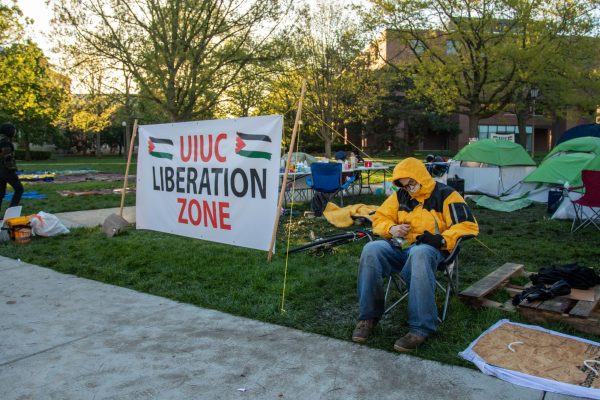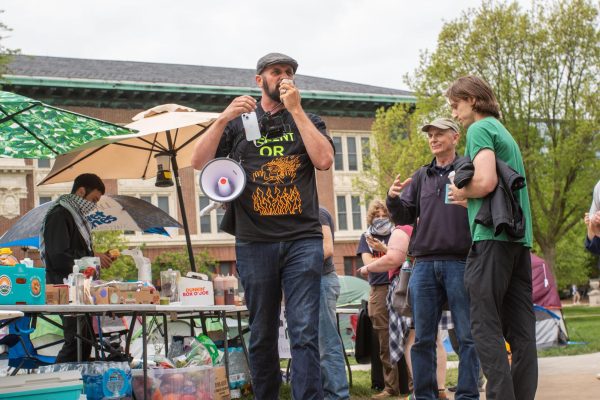West Coast’s wet weather moving out

Jon Livingston splashes through the flooded intersection at North Coltrane Avenue at the entrance to the Oak Tree Gun Club in Newhall, Calif. Livingston and his two friends spent the afternoon pistol shooting at the club. Oak Tree used a tractor and shove Will Davison, The Associated Press
January 29, 2008
LOS ANGELES – Skies were clearing Monday over waterlogged California after a week of downpours and heavy snowfall that led to avalanche and traffic deaths but only minor flooding and slides.
Highways closed because of heavy snow in the Sierra Nevada were reopened Monday, including a nearly 130-mile stretch of U.S. 395 just north of Bishop to the Nevada state line, state officials said. Interstate 80 through the Sierra between Sacramento and Reno, Nev., also was reopened Monday but chains were required, according to a Department of Transportation Web site.
The storm produced wind approaching 40 mph during the night in the mountains east of Los Angeles, said Penny Dodge, a desk clerk at the mountain resort community Big Bear Lake. It was the worst she has seen in her seven years in the area.
“We had it all last night – the wind and the blowing,” she said Monday.
The storm system was headed east Monday and could bring winds and heavy moisture to the Great Plains, National Weather Service forecaster Stan Wachowski said.
Get The Daily Illini in your inbox!
But California was due for a reprieve that would last at until at least Wednesday, when there was a 20 percent chance of rain.
“We’re definitely past the worst of it,” Wachowski said. “Now it’s just a matter of things winding down.”
Up to 3 inches of rain had fallen since Saturday along the Southern California coast, with nearly 8 inches in some remote mountain areas, the weather service said. The storms had pushed the seasonal total for Los Angeles to more than 11 inches, well past the norm of 6.5 inches at this time of year.
Experts said hillsides in Los Angeles, Orange and San Diego counties charred by last year’s wildfires remained at risk for landslides.
Sue Cannon of the U.S. Geological Survey’s landslide hazards program said the ground has not been able to dry out because of the back-to-back storms. “It still is a very hazardous situation,” she said.
Thousands of power outages were reported throughout Los Angeles and the San Francisco Bay Area.
Farther north, more than a foot of snow fell late Saturday through early Monday in parts of eastern Washington state. Classes were canceled Monday for more than 80,000 students across the state, including Spokane, and thousands more in nearby parts of Idaho and Oregon.
The weather service posted a winter storm watch saying 1 to 4 inches of snow was possible by Monday night in the Seattle area.
In eastern Arizona, heavy rains flooded some creeks and rivers and caused some evacuations and road closures. Officials also were concerned about two dams on the Fort Apache Indian Reservation, where an undetermined number of people were evacuated.
Three skiers were killed Friday by a trio of avalanches that swept through canyons outside the trails of Mountain High ski resort at Wrightwood, northeast of Los Angeles in the San Gabriel Mountains.
At least two California traffic deaths were believed linked to the storm, and a man walking along a road in Washington state died after being struck by a state snowplow, authorities said.
Associated Press writer Chris Weber contributed to this report






